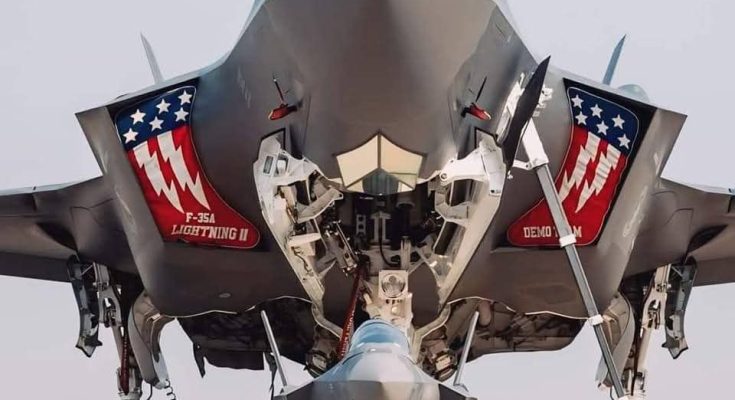Why The F-35 Lightning II is Such a Formidable Aircraft
The F-35 Lightning II is widely regarded as one of the most formidable aircraft in modern warfare. Developed by Lockheed Martin under the Joint Strike Fighter (JSF) program, the F-35 is designed to meet the needs of multiple branches of the military, offering unmatched versatility, cutting-edge technology, and exceptional combat capabilities. What makes the F-35 so formidable is its ability to perform a wide range of missions, its state-of-the-art avionics, and its unmatched stealth characteristics, ensuring that it holds an edge over nearly every other combat aircraft in the sky.
1. Stealth Technology
One of the F-35’s standout features is its stealth capabilities. Designed with low observability in mind, the F-35 features a combination of radar-absorbing materials, unique shaping, and internal weapon bays to minimize its radar cross-section (RCS). This allows it to operate effectively in heavily defended airspace without being detected by enemy radar. The aircraft’s advanced coating and carefully designed airframe help it evade detection by both ground-based and airborne radar systems, making it a “ghost” in the sky. This gives the F-35 a significant advantage in missions that require penetrating contested airspace, such as deep strike or reconnaissance missions, where being detected could be disastrous.
2. Multirole Capabilities
Unlike many specialized aircraft, the F-35 is a multirole fighter, meaning it is designed to perform various combat tasks, including air superiority, ground attack, electronic warfare, and intelligence, surveillance, and reconnaissance (ISR). The F-35 comes in three variants: the F-35A (conventional takeoff and landing, CTOL), the F-35B (short takeoff and vertical landing, STOVL), and the F-35C (carrier-based). This makes the F-35 adaptable for different military needs, whether for air force, navy, or marine corps operations.
- The F-35A excels in traditional air-to-air combat and precision strikes.
- The F-35B provides the Marine Corps with unparalleled flexibility, allowing it to operate from shorter runways or amphibious assault ships.
- The F-35C is designed for carrier-based operations, capable of landing on aircraft carriers while carrying a powerful load of weapons and sensors.
This versatility allows the F-35 to be used in a wide range of combat scenarios, providing multinational forces with a capable, flexible platform that can be used for everything from air dominance to close air support.
3. Advanced Avionics and Sensor Fusion
The F-35 is equipped with some of the most advanced avionics and sensor systems ever developed for a fighter aircraft. One of its most significant innovations is its sensor fusion technology, which combines data from multiple sensors, including its AN/APG-81 AESA radar, infrared search and track (IRST) system, and electronic warfare (EW) systems. This data is processed and presented to the pilot on a single integrated display, providing an unparalleled level of situational awareness.
This fusion of information allows the F-35 to track and engage multiple targets simultaneously while minimizing the chances of being detected. For example, the aircraft’s Distributed Aperture System (DAS) allows the pilot to see a 360-degree view of the battlefield, including tracking threats, identifying targets, and even detecting missile launches. This level of situational awareness is vital in modern air combat, where split-second decisions are crucial to survival and mission success.
4. Superiority in Combat
The F-35’s combination of stealth, advanced avionics, and weapons systems makes it a highly lethal platform in combat. The aircraft can carry a wide variety of air-to-air and air-to-ground munitions, including the AMRAAM (Advanced Medium-Range Air-to-Air Missile) and JDAM (Joint Direct Attack Munition). These capabilities allow the F-35 to dominate both air superiority and precision strike missions. Furthermore, the aircraft’s internal weapons bays maintain its stealth profile while carrying beyond visual range (BVR) weapons, allowing it to engage adversaries at distances before they can even react.
In combat, the F-35 can operate alongside other fifth-generation aircraft, such as the F-22 Raptor, and relay data to other units in real time, enhancing the effectiveness of the entire combat network. The aircraft’s capability to operate in both offensive and defensive roles, combined with its stealth, makes it a powerful force multiplier in modern military operations.
5. Global Integration and Interoperability
The F-35 is not just a U.S. asset but a global platform, used by over 14 nations worldwide, including NATO allies and partner countries. This widespread adoption enhances interoperability between nations, meaning that allied forces can operate seamlessly together. The aircraft’s data-sharing capabilities allow for collaborative missions, where information can be exchanged between different F-35 units and other platforms like AWACS (Airborne Warning and Control Systems), satellites, and ground command centers. This level of integration maximizes the effectiveness of multinational operations and ensures that the F-35 remains a central part of the global defense network.
Conclusion
The F-35 Lightning II is undeniably one of the most formidable aircraft ever built due to its stealth capabilities, multirole versatility, advanced avionics, and combat performance. Its ability to dominate airspace, strike ground targets with precision, and operate in the most challenging environments gives it a significant edge over competitors. Moreover, its integration into the global defense network makes it a cornerstone of modern military operations, ensuring its relevance in future conflicts. As defense needs evolve and threats grow more complex, the F-35 remains at the forefront of air combat technology, solidifying its reputation as a true game-changer in modern warfare.



